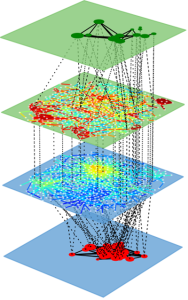This dataset includes 183 Twitter retweet networks collected during the 2019 Finnish Parliamentary Elections. The nodes in the networks represent anonymized Twitter accounts, and directed ties indicate retweet endorsements on specific topics. Each file contains three columns: retweeter, retweeted, and weight. The are citation networks used in the articles:
Chen, T. H. Y., Salloum, A., Gronow, A., Ylä-Anttila, T., & Kivelä, M. (2021). Polarization of climate politics results from partisan sorting: Evidence from Finnish Twittersphere. Global Environmental Change, 71, 102348. https://doi.org/10.1016/j.gloenvcha.2021.102348
Salloum, A., Chen, T. H. Y., & Kivelä, M. (2022). Separating polarization from noise: comparison and normalization of structural polarization measures. Proceedings of the ACM on human-computer interaction, 6(CSCW1), 1-33. https://doi.org/10.1145/3512962
Get the data from here: https://zenodo.org/records/8434372
License: Creative Commons Attribution Non Commercial 4.0 International

